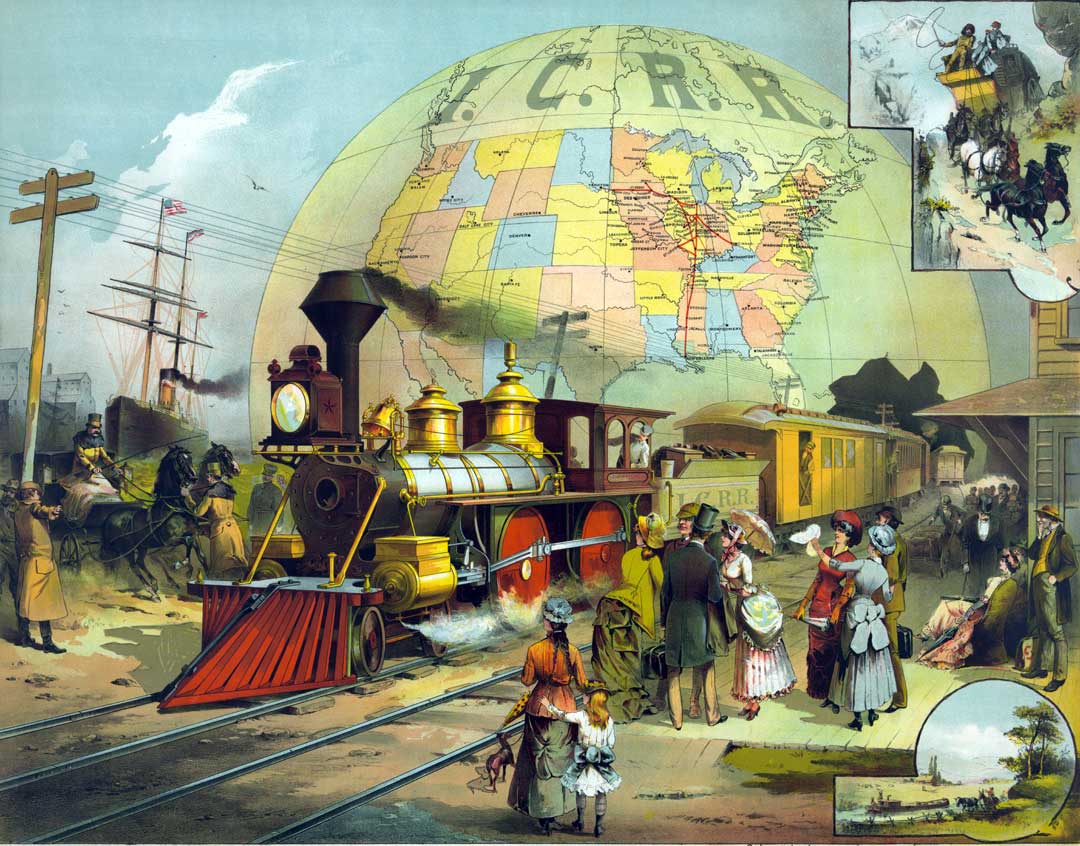Economic Impact of Railoads

CPrint showing well-dressed passengers waiting as the Illinois Central Railroad train pulls into the station; also shows a steamship, horse-drawn carriage, stagecoach, and canal boat, along with a large globe displaying the United States and the extent of the I.C.R.R. lines.
The expansion of the railroads was a key factor in the economic growth of the United States in the post Civil War period. During the 15 years from the end of the Civil War to 1880, the tonnage carried by the principal railroads in the United States exploded from 2.16 billion to 14.48 billion — i.e., a 600% increase. In that same period, the track mileage covered by US railroads grew from 35,000 to 115,647 miles. By 1880, there were 18,000 locomotives in service in US railroads. In the decade between 1880 and 1890 an average 6,000 miles of track were laid every year. By 1890, railroads were – by far – the largest employer in the United States employing 749,000 workers. Sadly, railroads were also the primary killer of Americans. In 1890, 6,335 people were killed and 29,000 were injured in railroads accidents.
Railroads contributed to American economic growth on a number of fronts. First, the actual construction of the rails themselves provided a large economic stimulus. I created the need for steel to construct rails and build locomotives, not to mention the other rolling stock. Second, the formation of the railroads resulted in the settlement of new areas of the country that were suddenly accessible. Finally, the existence of railroads enabled the establishment of true national markets for goods. It was suddenly possible to transport almost any goods rapidly, to anywhere else in the country. It is estimated that the existence of railroads was responsible for an increase of at least 20% in the value of agricultural lands, since the railroads gave farmers the option of selling their produce far from the local markets.
The growth of the railroads did not come without challenges. Most of the Western railroads were built with massive government subsidies, in the form of land grants. The railroads received the land, along with the right of way, and were free to sell land to finance their construction. This resulted in a number of financial scandals, as well as, an over construction of railroads. When two railroads served the same area, they would often compete so fiercely on price that one of them would be forced into bankruptcy. By 1895, one fourth of all railroads were operating under receivership.
Railroads also became the first really large American corporations. They also inaugurated the period of business trusts, in which, through interlocking companies, groups of businessman controlled many different railroads — at times, even ones that nominally competed with one another. In short, at this time, Americans had a love-hate relationship with the railroads. Railroads represented progress, American innovation and American power, while at the same time, being centers of greed and often corruption.
